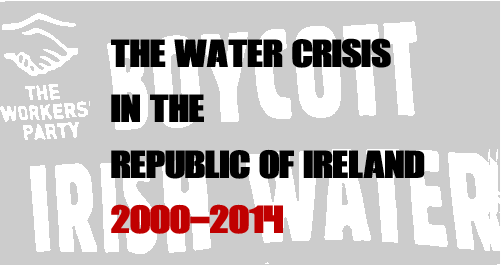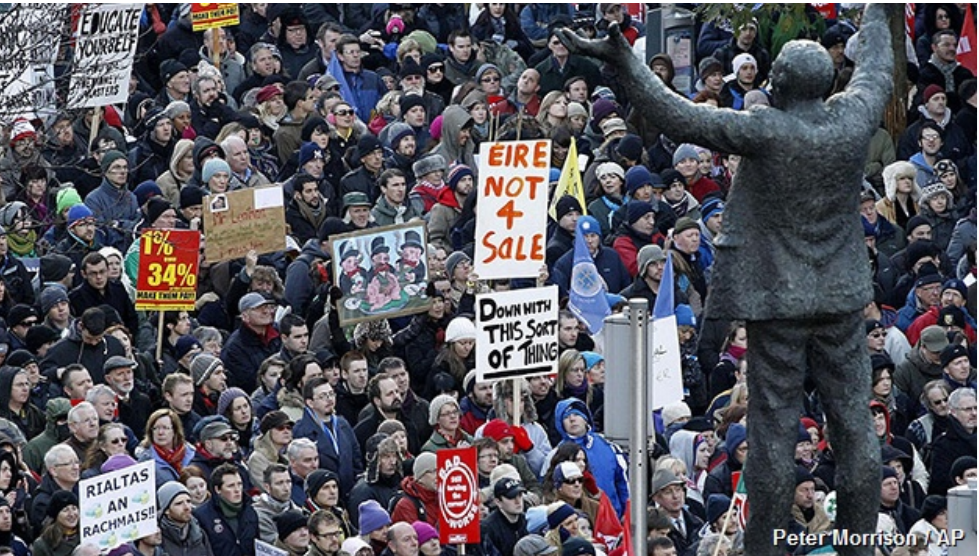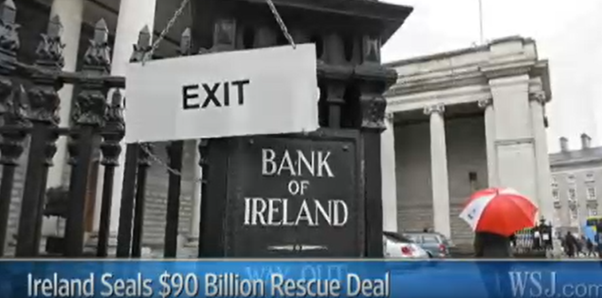
Between 2010 and 2013 the government responded to economic collapse by forcing austerity on the Irish people. The Croke Park Agreement (2010) saw public sector unions accept restructuring in exchange for no further pay cuts or job losses. However, by 2012, 28,000 public sector jobs were cut, and the pay bill reduced by €3.1 billion.
In the wake of the banking crisis, Ireland secured an €85 billion bailout from the ECB and IMF, which mandated austerity measures, including wage cuts and water charges. The creation of Irish Water in 2013 aimed to implement these charges, seen as a move toward privatization. Despite raising only €300 million annually, the charges sparked mass protests, symbolizing public anger. By 2014, austerity measures had raised €10 billion, with water charges fueling widespread discontent.
2000-2009
In 2000, the European Water Framework Directive translated the market-environmentalist principles of the Dublin Statement into European Law. It requires that member states achieve cost recovery of water services and a disaggregation of industry, households, and agriculture in the structuring of charges by 2010. Article 9.4 of the Directive, known as the Irish exemption, dispenses governments from levying adequate user charges in cases where there is established practice to the contrary.
But this exemption didn’t stop successive governments from attempting to introduce water charges throughout the decade.

Plans formulated by both of the main parties (Fianna Fáil and Fine Gael) to implement water charges in 2002, 2006 and 2009 were not followed through due to popular opposition. In its March 2009 document on jobs—Rebuilding Ireland A ‘New Era’ for the Irish economy. Fine Gael (FG) proposed a new semi-state company, to be called Irish Water, with responsibility for investment in water infrastructure. Domestic water charges were mentioned in context of ‘increased cost recovery’ and a flat-rate fee was suggested pending metering.
2010-2013
In 2010 the Croke Park Agreement was a deal between the state and public sector trade unions, notably the ICTU. In exchange for no further job and wage cuts, public sector unions agreed on wide-ranging restructuring measures, which divided public sector from private sector trade unions and even led to splits within public sector unions, as some unions not endorse the agreement. By March 2012, 28,000 public sector workers had lost their jobs and the annual public sector pay bill had been reduced by €3.1 billion. Despite 150,000 people attending the ICTU march against the bailout and austerity in November 2010, no further mobilisation was organised by ICTU in the two-year period up to February 2013.

The Irish economy had entered into a severe recession in 2008, and then an economic depression in 2009. By September 2010 Ireland was out of depression but the banks could not raise finance, and an unlimited guarantee by the Irish government of all debt belonging to 6 major banks which had been signed in 2008 was renewed for a third year. Government bailouts for the banks rose to 32% of GDP, and the Irish government turned to the ECB and the IMF for help.

This quickly resulted in a €85 billion rescue deal (the Memorandum of Understanding), which helped the banks and served as a spur to the deepening of austerity policies. Public sector pay had already been cut in 2009, but the Memorandum of Understanding called for further wage cuts as well as further liberalization of an already highly flexible wage-setting regime. The bailout agreement specified that Ireland had to introduce water charges as part of the austerity measures. It included a pledge to “move towards full cost-recovery in the provision of water services”, with responsibility for water transferred from local authorities to a national utility. In a letter to the IMF in December 2010, the Irish government proved that it was more than willing to implement austerity when it unilaterally offered to “move towards full cost-recovery in the provision of water services”.
In May 2010 Cork City Councillor, and current President of the Workers party, Ted Tynan wrote that, “the proposed water charges will be another tax on the family home and a further attack on ordinary working people who have been hammered by this Government to pay for the banking bailout. More importantly, water metering and charges are part of the preparation for the privatisation of the public water service which will inevitably mean even higher water bills and a poorer service in the future.”
The Water Services Bill was adopted in 2013 and the state-owned utility Irish Water started to operate on 1 January 2014. Irish Water was established in as a standalone utility service, the purpose of which was to introduce domestic water charges on a national basis. Under self-funding, approximately 50% of Irish Water’s funding money had to be raised on capital markets. As a result, although in legal terms Irish Water was in public hands, it was required to operate on the market like a private company.
Between 2008 and 2014, austerity budgets raised almost €10 bn in total. It was estimated that water charges would initially raise €300 million annually, a relatively minor austerity measure. Nonetheless, water charges became the pivotal issue in Irish austerity politics through which many other grievances were aired, and a series of mass protests, and political realignments can be said to have their roots in widespread opposition to water charges.
